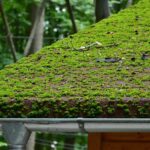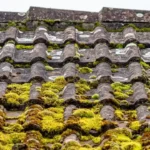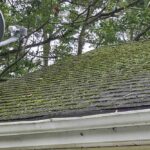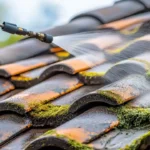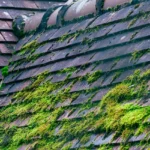Flat roofs are a popular choice for many homeowners due to their modern aesthetic and cost-effectiveness. However, one common issue they often face is ponding water. This occurs when water accumulates and remains on the roof’s surface instead of draining away, which can lead to significant damage over time. Understanding how to avoid ponding on flat roofs is essential for maintaining your home’s integrity and prolonging the life of your roof.

Understanding Ponding Water
Ponding water is usually a result of poor drainage or an uneven roof surface. It can create stress on the roofing materials, leading to leaks, deterioration, and even structural damage. Recognizing the signs early and taking preventive measures can save homeowners from costly repairs.
The Importance of Proper Drainage
Proper drainage is a key element in preventing ponding. A well-designed roof drainage system ensures water flows off the roof efficiently. This system includes drains, scuppers, and gutters that are strategically placed to handle water runoff effectively.
Regular Maintenance and Inspection
Regular maintenance is crucial in preventing ponding on flat roofs. This includes inspecting the roof for debris that can block drains, checking for any signs of water accumulation, and ensuring that drainage systems are not clogged. For tips on maintaining a clear system, check out how to unclog roof drainage systems.
Leveling the Roof Surface
An uneven roof can exacerbate the problem of ponding. Ensuring a level surface is critical, and this can be achieved by adding sloping materials or using a tapered insulation system. This promotes proper water flow towards the drainage points.
Materials and Installation Techniques
Choosing the right materials and installation techniques can make a significant difference in preventing ponding water. Materials like PVC or TPO membranes are designed to withstand standing water better than traditional roofing materials.
Professional Installation
Professional installation is crucial to ensure that the roof is laid correctly and that all drainage components are installed for maximum efficiency. Consulting with a roofing expert can provide insights into the best practices for installing a flat roof.
Adding Roof Coatings
Roof coatings can provide an additional layer of protection against water accumulation. These coatings can help to seal small cracks and imperfections, further reducing the risk of water pooling.
Technological Innovations
Advancements in roofing technology have introduced new solutions for preventing ponding water. These include smart drainage systems that can detect water levels and automatically clear blockages.
Green Roof Solutions
Green roofs, which incorporate vegetation, can absorb rainwater and reduce runoff, effectively minimizing ponding. For more insights into innovative drainage solutions, visit this external resource.
Regular Upgrades
Keeping your roofing system updated with the latest technology can significantly reduce ponding issues. This includes upgrading to more efficient drainage systems and materials.
Impact of Weather Conditions
Weather conditions play a significant role in ponding water issues. Heavy rainfall or rapid snowmelt can overwhelm drainage systems, leading to water accumulation. It is important to consider these factors when designing and maintaining a flat roof.
Seasonal Preparations
Preparing your roof for seasonal changes can help prevent ponding. This might involve clearing gutters before the rainy season or ensuring that snow is promptly removed during winter months.
Long-term Solutions
While immediate fixes are important, long-term solutions are essential for preventing ponding. This might include installing a more robust drainage system or investing in regular professional inspections.
Consulting with Experts
Consulting with roofing professionals can provide tailored solutions for your specific roof design and environmental conditions. They can offer advice on the best materials, installation techniques, and maintenance practices.
Comprehensive Roof Assessments
Conducting comprehensive roof assessments can identify potential problem areas before they lead to significant ponding issues. For more information on residential drainage solutions, check out residential drainage solutions.

FAQs on Ponding Water
What is the main cause of ponding water on flat roofs?
Poor drainage and an uneven roof surface are the primary causes of ponding water. Regular maintenance and proper installation can mitigate these issues.
How often should I check my flat roof for ponding?
It’s advisable to check your roof at least twice a year, especially before and after the rainy season. Regular inspections can help catch problems early.
Can ponding water cause long-term damage?
Yes, if left unchecked, ponding water can lead to leaks, material deterioration, and structural damage. Addressing ponding issues promptly is crucial.
This article contains affiliate links. We may earn a commission at no extra cost to you.




